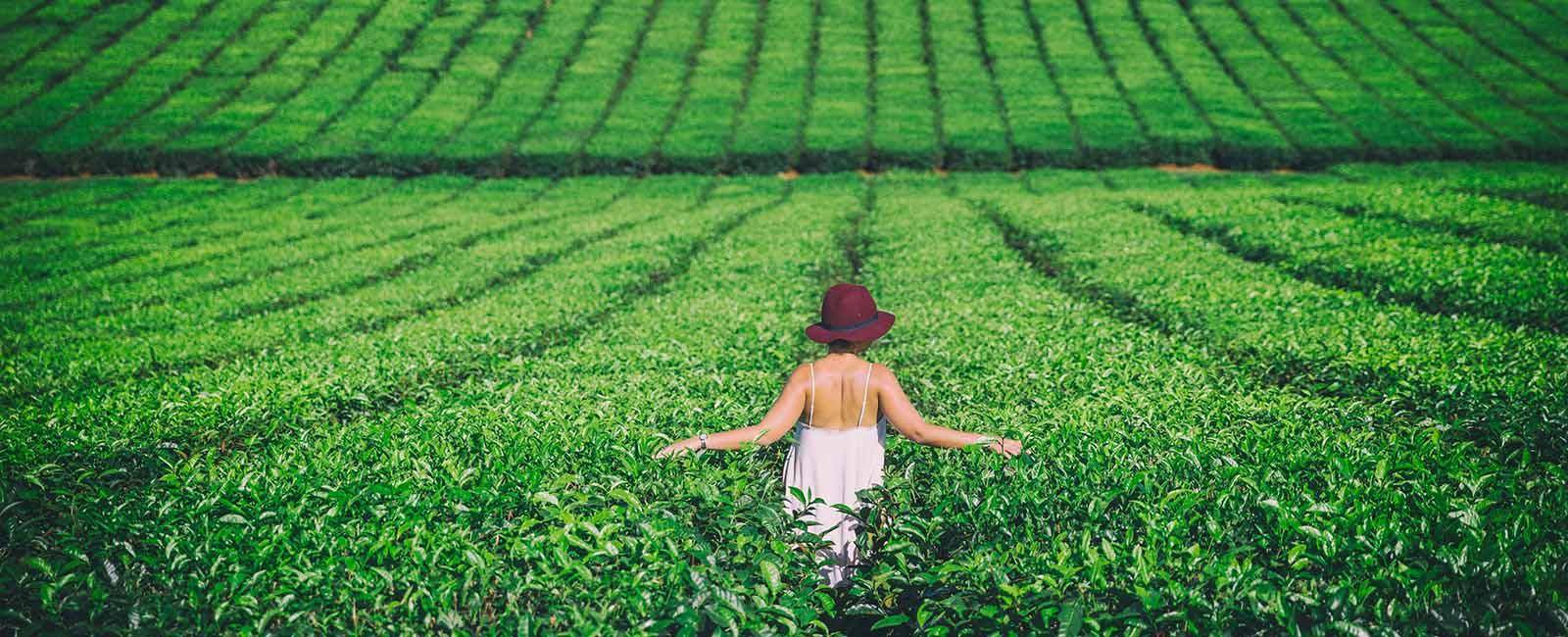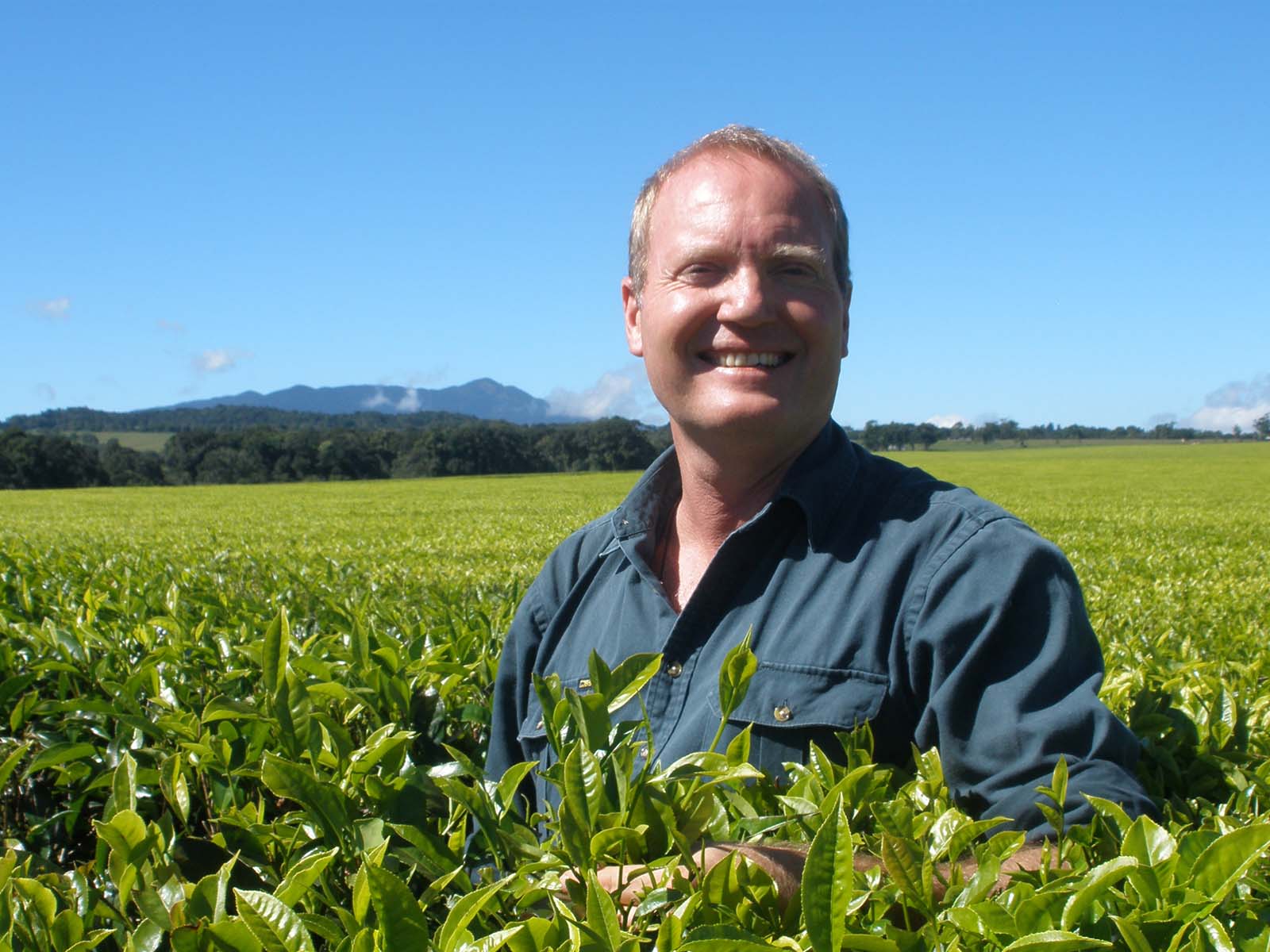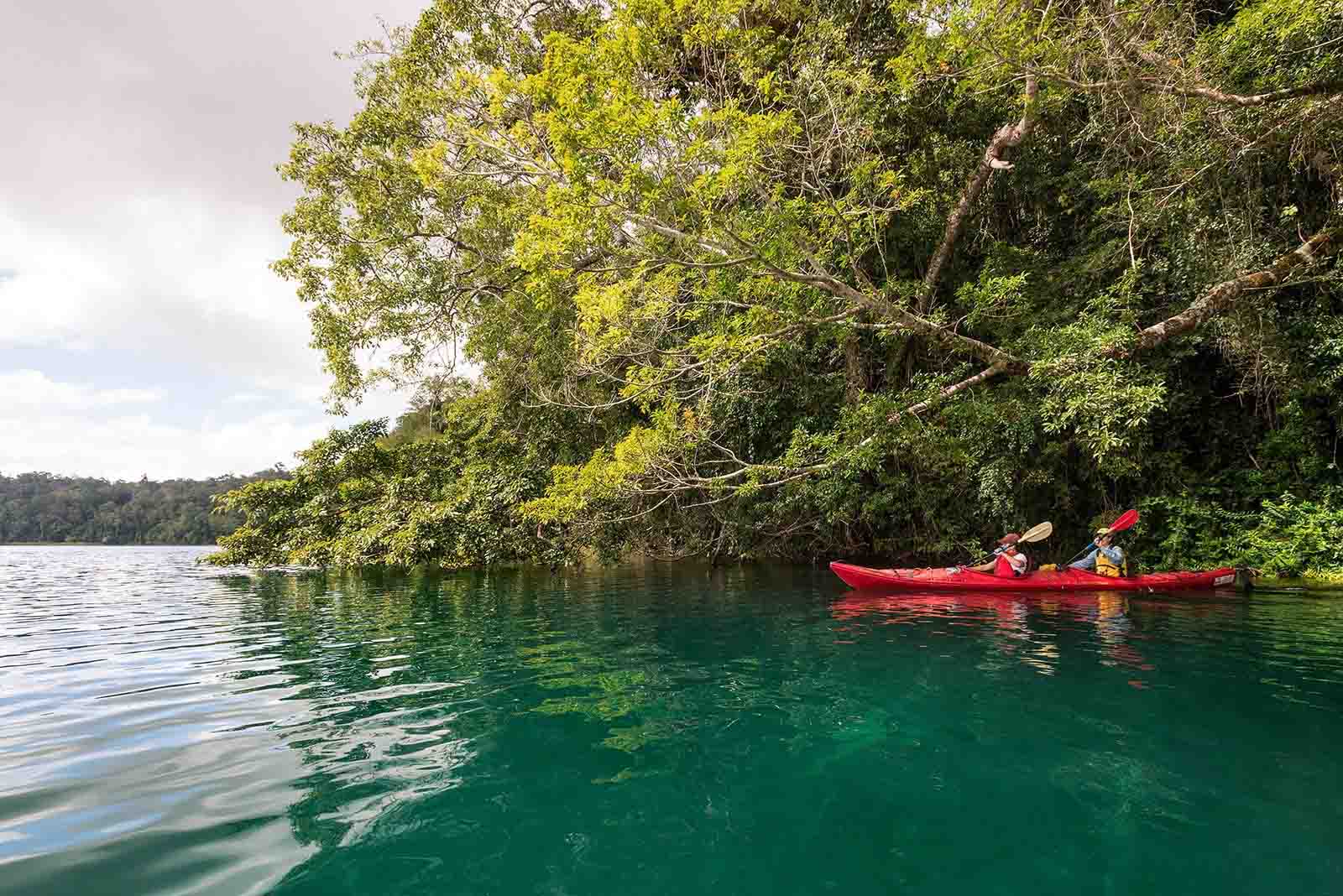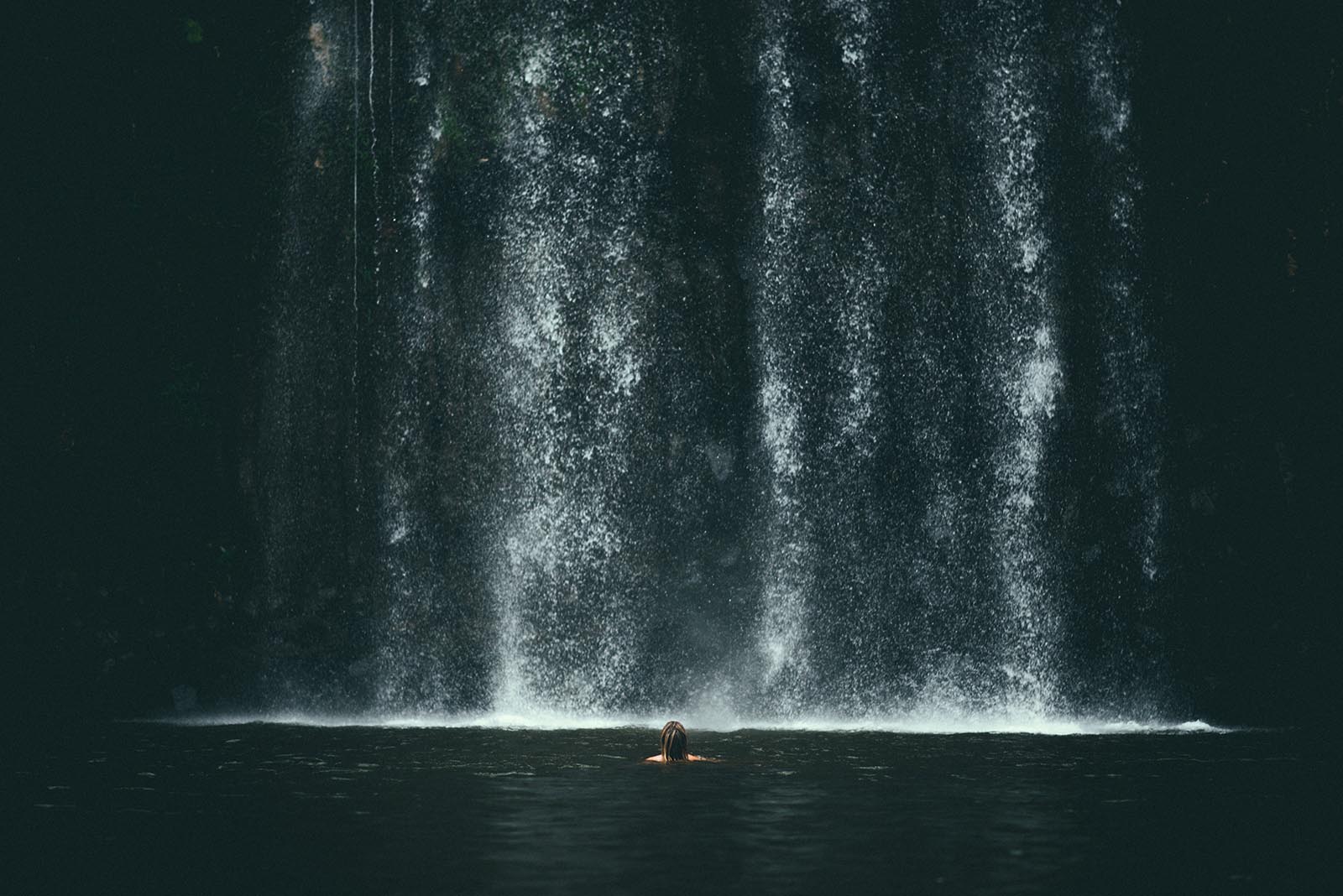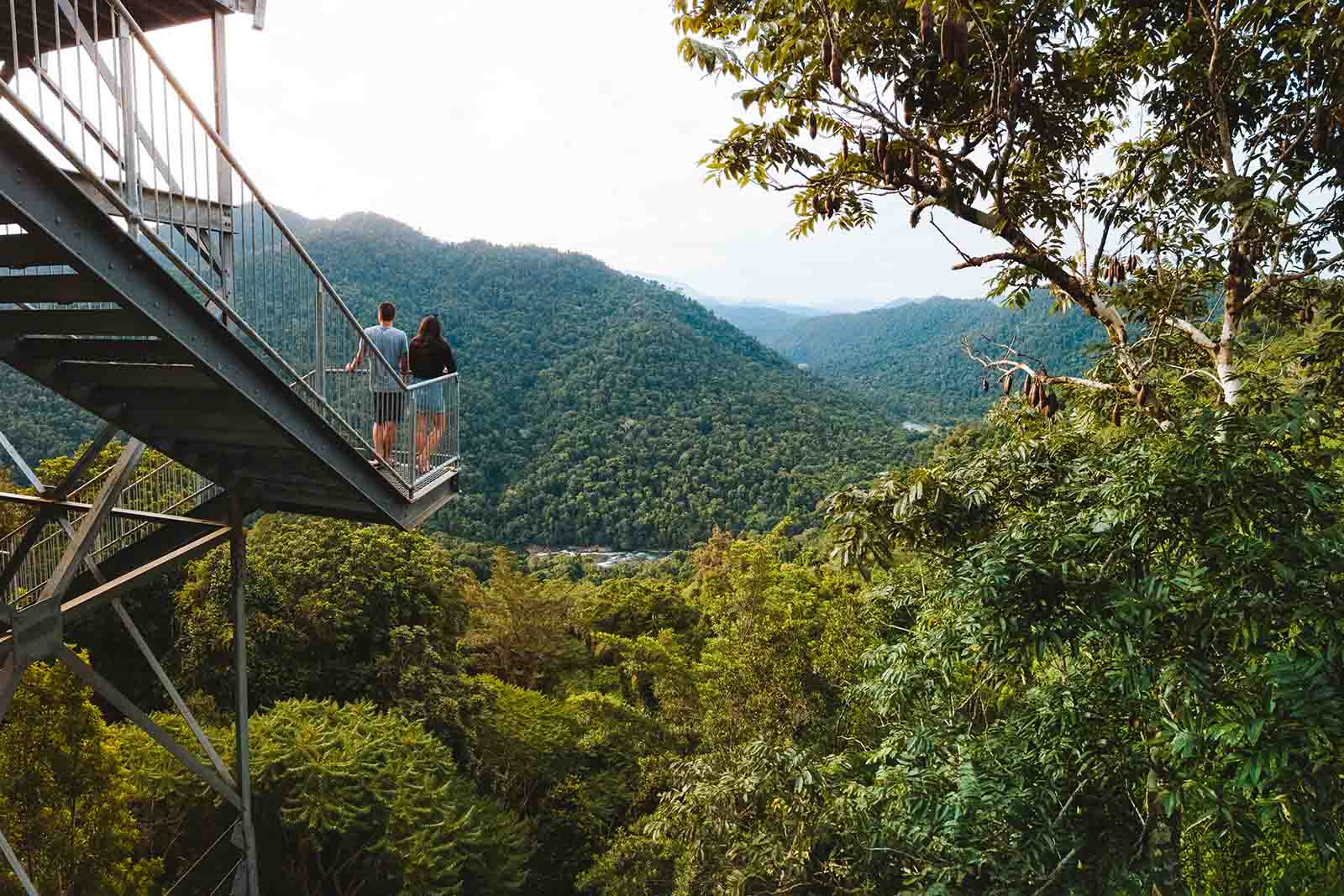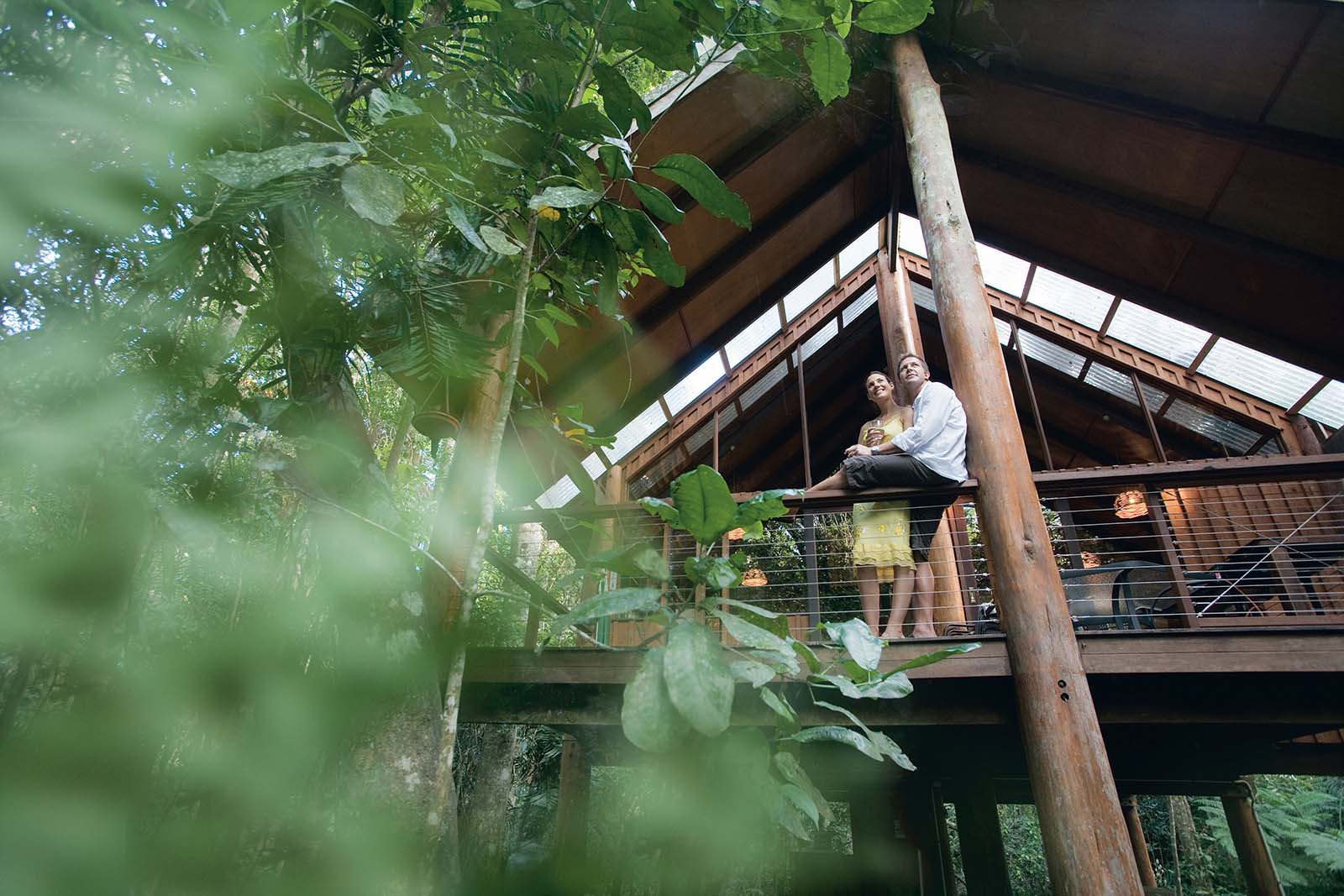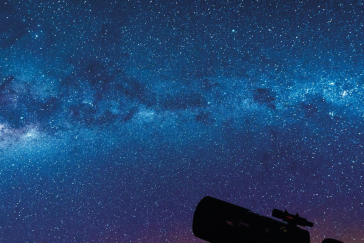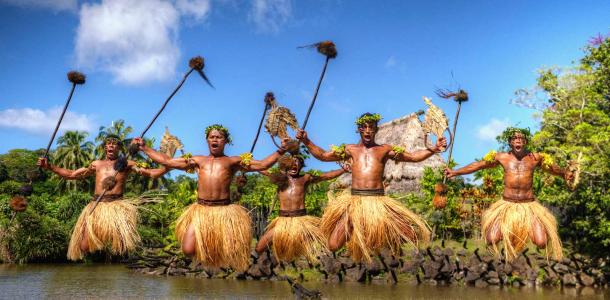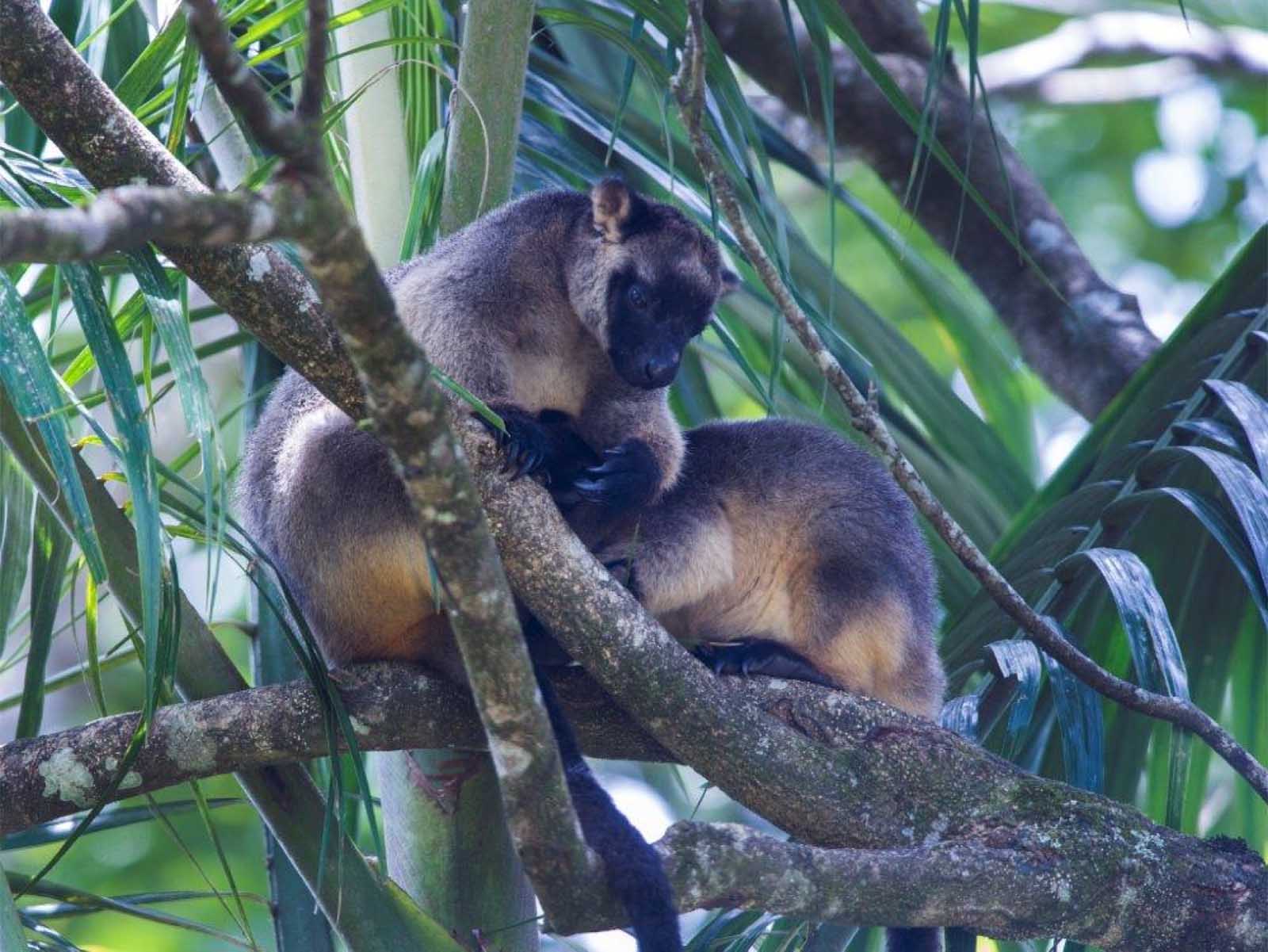
Looking rather like an oversized possum but with a longer tail, a fluffy tree kangaroo looks up at me with wide brown eyes. Hurriedly, I replace my tea cup in the saucer and grapple for my phone to take a picture of the elusive local. Startled by my movement, it bounds off and deftly hoists itself into the highest boughs of the nearest tree.
Often thought to be a myth, native Lumholtz’s tree kangaroos are real, but are difficult to spot in the wild unless, of course, like me you happen to be sitting at the Nerada Tea Plantation and Visitor Centre near Malanda, about 90 minutes drive from Cairns.
Hidden secrets
Here, a family of tree kangaroos has taken up residence and been delighting visitors for years, says plantation director Tony Poyner who is also a long-time resident on the property and can’t imagine a better place to work.
“Our farmland is surrounded by world-heritage national park, Mount Bartle Frere (the highest mountain in Queensland) and rolling hills with grazing cattle so it’s a pristine environment,” he says proudly.
“We let the rain irrigate our crops, we don’t spray them with pesticides, and we are a single origin tea. The end result is a very clean, aromatic and honest tea, with a robust taste but no bitterness.”
Nerada’s sustainable approach to farming, with a focus on the wellbeing of its staff as well as its environment, has earned it recognition as a Rainforest Alliance Certified operator.
The science of tea
When I visit, the tea processing factory is abuzz with activity – loads of green Camellia Sinensis tea leaves are being deposited into withering bins to allow the moisture to evaporate, before being shredded to release their enzymes and then oxidised and dried to create the dark brown tea leaves that fill our cups. From my vantage point on the public viewing platform, I can see the tender leaves being crushed and cut to release their juices, resulting in the distinctive tea flavours.
“Tea making does have a lot of science behind it because it will react in a certain way under certain conditions such as moisture, temperature, humidity and every other parameter you can think of, but ironing out those day-to-day and hour-to-hour parameters to ensure the flavour profile stays consistent … that is an art,” Poyner says.
Location is also important. The high altitude, cooler temperatures and rich, volcanic soil of the Atherton Tablelands means the tea plants are slower growing and healthier, allowing essential oils to build in the leaves.
Nerada Tea travels from the farm fields to supermarket shelves within as little as four weeks but visitors to the plantation Visitor Centre have the advantage of being able to sample the factory fresh brew and other varieties that can only be purchased online or at the plantation – teas such as the lighter Royal Devonshire or the strong and bold Colonial Brew.
The taste test
“You can taste the freshness of our teas,” Poyner says. “As tea ages, the taste changes. It mellows and the wow factor will diminish. Like all produce, fresh is best.”
Poyner, who confesses to enjoying four or five cups of tea per day, is also Nerada’s chief tea tester, ensuring the quality of the Nerada tea brand. His tea tasting method is not high tech but reflects his years of experience.
To demonstrate, Tony places a scoop of tea leaves into a small spoutless pot, adds boiling water and allows the infusion to steep. After a few minutes, he pours the black tea into a cup and noisily slurps the liquid, to draw it across the palate.
“I always taste the tea black and I’m checking for consistency across every cup,” Tony says. “The depth of colour is important too, and the aroma.”
As he tests each sample, he offers me some expert tea tips.
“Don’t continually boil the water as it deoxygenates it,” he says between slurps. “And if possible, try to use rain water, or water without chlorine. It really does make a difference.”
A perfect blend
Nerada is the largest tea grower in Australia but they’re not the only tea farm making the most of the region’s optimal growing conditions. Ulysses Tea, named after the famed blue butterflies that inhabit the tablelands, is also grown locally and features on the menu at the nearby Lake Barrine Teahouse. Only a 15-minute drive from the Nerada Estate, the teahouse is one of a few local retailers selling the boutique tea, which is not available in supermarkets or online.
With the credentials of serving Devonshire teas since the 1930s, the Lake Barrine Teahouse matches the locally sourced tea with fluffy scones and home-made raspberry and plum jam. I take a seat on their outdoor terrace, overlooking the freshwater lake and rainforest, where a few raucous pelicans are the only disruption to the peaceful scene. Sipping on my cuppa, I’m struck by the rawness of the tea’s taste but find it milder in flavour than the Nerada cup.
Visitors also flock to Lake Barrine to relax on the sedate boat cruises (tickets available at the café) and to tackle the lakeside hiking tracks that get walkers up close to giant kauri trees, towering red cedars and flowering umbrella trees in the protected rainforest.
Back on the road, the circuit of Malanda, Millaa Millaa, Ellinjaa and Zillie waterfalls is a worthy detour, especially after rain. While waterfall chasing could be a day tour in itself, my tea trail continues south, along the Palmerston Highway which leads to the zigzagging green fields of the Nucifora Tea plantation at Palmerston.
There’s a self-service roadside stall where I pick up a packet of their loose leaf tea, which is also available online (their teabags are available in major supermarkets). It, too, is pesticide-free, full-bodied with a rich colour and taste, similar in profile to Nerada Tea.
Armed with a few souvenirs from the roadside stall, I push onto Mamu Tropical Skywalk. Located in the Wooroonooran National Park, about 30 minutes west of Innisfail, a cantilevered walkway reaches over the treetops and a 37-metre-high viewing deck gives a bird’s eye view over the spectacular volcanic gorge.
Spectacular surroundings
The park is in the Wet Tropics World Heritage area that covers almost 9000 square kilometres of North Queensland and during my visit, not surprisingly, it is humid and wet with cicadas and tropical birds chirping and singing noisily and happily. I’m told resident cassowaries are often seen foraging for insects on the rainforest floor, although I’m not lucky enough to spot one.
The drive back to Cairns takes me past sugarcane fields and rows and rows of banana trees but my final pit-stop is at the picturesque Babinda Boulders swimming holes. Crystal-clear water pours continuously down from the mountains over giant granite boulders at the popular spot, but while others splash merrily in the natural pools I fill a water bottle to take back to Cairns for a few more cups of purest, flavoursome tea.
Where to stay
It’s possible to tackle this itinerary within a day’s drive from Cairns, but there’s plenty to fill a longer visit to the tablelands. Linger longer at one of these overnight lodgings.
- The Canopy Treehouses are only 15 minutes south of Malanda and set in ancient rainforest which is home to cassowaries and an abundance of wildlife.
- Eden House Retreat or Allumbah Pocket Cottages offer boutique accommodation in the quaint town of Yungaburra, 15 minutes north of Malanda, and walking distance to shops and restaurants.
More tea please
A two-hour drive north of Cairns Daintree Tea’s Cubbagudta plantation is on Cape Tribulation Road at Diwan, surrounded by Daintree Rainforest, where visitors can stop at its roadside stall to buy a souvenir of farm-fresh tea and look at photos and old machinery on display. Tea connoisseurs will enjoy the smooth and mild taste of this unblended and pesticide-free tea which is also available online and in selected supermarkets on Queensland’s east coast.
GETTING THERE
PLAN YOUR TRAVEL

